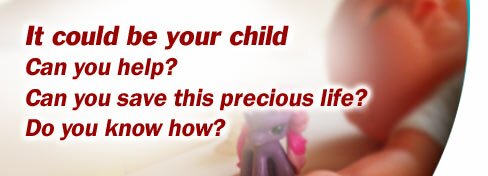CPR Research France
|
  Steps to perform CPR on a child (1-8 years old) Steps to perform CPR on a child (1-8 years old)
Choking - Conscious Child (1-8 years old)
|

Tali had saved the life of a 1 year old child. The child choked and became unconscious. She gave him CPR.
Become educated in CPR - learn how to save a life! B.E. CPR is a non-profit that aims to raise awareness & make CPR education easily accessible for parents We are passionate about spreading the importance of becoming educated in CPR to save the lives of those we love around us.
Accidental injuries, including choking and drowning, are the leading cause of death in children - and send over 16 million kids a year to the emergency room.
Over 70% of all cardiac and breathing emergencies occur in the home when a family member is present and available to help a victim.
CPR saves lives. Statistics show that the earlier CPR is initiated, the greater the chances of survival. In fact, the American Heart Association estimates that 100,000 to 200,000 lives of adults and children could be saved each year if CPR were performed early enough.
|
|||||||||
| Copyright 2024 "CPR Research France". |
| Copyr Design by LightMix |